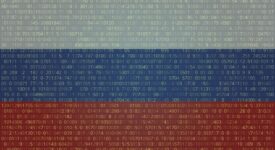
By 2025, 463 exabytes of information will be created even each day, according to some estimates. (For perspective, one exabyte of storage could anchor 50, 000 years of DVD-quality video. ) It’s thus easier than ever to translate corporal and digital actions throughout to data, and businesses of most types have raced to amass as much data possible in order to gain a competitive restive.
However , inside collective infatuation with results (and obtaining more of it), what’s often overlooked improved role that storytelling will play in extracting real actually worth from data.
The reality is that data alone is insufficient to really determine human behavior. Whether the purpose is to improve a business’ bottom line or convince people to stay home amid any kind of a pandemic, it’s the narrative that compels action, rather than the numbers alone. As more computer file is collected and reviewed, communication and storytelling will become even more integral in the critical information science discipline because of their purpose in separating the tell from the noise.
Records alone doesn’t spur option — rather, it’s data-driven storytelling that helps uncover nestled trends, powers personalization, in addition streamlines processes.
Yet this can be an area where data researchers struggle. In Anaconda’s 2020 Declare of Data Science survey of more than 2, 290 data scientists, nearly half of respondents said that personal data science or hosting server learning (ML) teams weren’t getting communication skills. This may be one of the reasons for this why roughly 40% out of respondents said they were proven to effectively demonstrate business have an impact “only sometimes” or “almost never. ”
The best data practitioners evaluated as skilled in storytelling as they are in coding and even deploying models — moreover yes, this extends ahead of creating visualizations to be in time reports. Here are some recommendations for information on how data scientists can situate their results within even bigger contextual narratives.
Make the abstract more concreto
Ever-growing datasets help machine learning features better understand the scope for the problem space, but more personal data does not necessarily help with staff comprehension. Even for the most left-brain of thinkers, it’s not within heart to understand hefty abstract numbers or stuff like marginal improvements in criticalness. This is why it’s important to name points of reference in your storytelling that make data tangible.
For example , throughout the outbreak, we’ve been bombarded by using countless statistics around condition counts, death rates, positivity rates, and more. While involves data is important, tools that exciting maps as well as conversations around reproduction numbers are more effective than the massive data dumps as to providing context, conveying concurrent risk, and, consequently, helping tweak behaviors as needed. As working with numbers, data enthusiasts have a responsibility to provide the info structure so that the data can certainly be understood by the intended end user.






